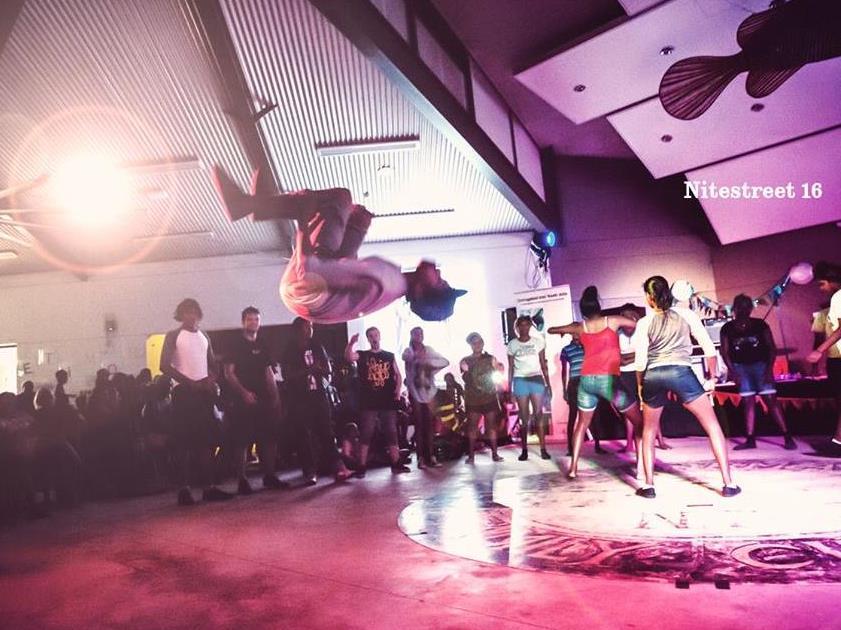Nitestreet 16 at Kormilda College.
Working with young people in the Top End of Australia, Corrugated Iron Youth Arts operates at the crossroads between developing professional theatre productions and community engagement. The organisation strikes a balance between the two, and even connects them by providing opportunities for young performers to work alongside professional actors in productions.
‘We are, on the one hand, doing professional touring productions and on the other doing community engagement work with young people who may have limited access to the arts,’ said Jane Tonkin, Executive Producer of Corrugated Iron Youth Arts.
At the moment, the organisation is in the midst of auditions for a new show, Mister Takahashi and other falling secrets – a co-production between Cairns, Darwin and Broome that tells a northern Australian story.
‘Mister Takahashi will pick up young performers in each city, giving young aspiring artists the opportunity to perform alongside the professional core cast.’
As an organisation that aims to provide creative opportunities for young people and continue supporting individuals who aspire to a career in the arts, Corrugated Iron finds numerous ways to engage young people.
For many, youth arts programs are the first place where the spark of creativity is ignited and these organisations often provide important resources for creative development and encourage social inclusion for young people.
Empowering young people
A series of workshops, often in collaboration with schools, introduces many young participants to the organisation. But mentorships extend this model from participation to leadership.
‘A big part of our program at the moment is mentoring our young artists and facilitators. We are a very transitory community and are constantly saying “see you later” to young people who finish year twelve and move interstate to pursue artistic careers and further their training, so we are really reliant on our young facilitators and love training them up,’ said Tonkin, who has led the organisation for 10 years.
‘Our dream, or our best case scenario, is that we work with young people in those environments who leap to the opportunity to drive what we do with them. So they will initiate projects, ideas and creative visions, that we can then help execute,’ said Tonkin.
But it is important to engage young performers in their own space, said Tonkin.
‘Not all students will feel like school is their space. But we do work through drop in centres and open access spaces like the Red Cross Shak here in town where we do regular work. For the young people who go to these spaces, it’s their turf. And so it makes it easier sometimes to offer something new that someone might not have necessarily tried before and might not seek out.’
‘Taking an activity into a space where young people already gather means you already have a good start and then you can just make offerings and see what they respond to.’
Collaboration
‘We love partnerships. They are a really crucial part of the way that we work,’ said Tonkin.
This includes many partnerships with schools in regional and remote Indigenous communities in the Northern Territory.
For a recent collaboration with the Yirrkala Arts Centre, Corrugated Iron invested in the engagement of local artists to work with young people on the design component for a new set of gates.
‘The objective of our work in that setting was about finding ways to work with young people and focus on them engaging the school and learning in a creative way but also mechanisms to bring local artists, community members and families into that space as well.’
‘It meant that the young people were part of a process about their totems and local iconography – so important learning culturally. And then everybody took part in creating these elements.’
Allow time
For those who want to work creatively with young people, Tonkin also has the following advice.
‘Take it slow and steady. Don’t come in with unrealistic expectations around instant high levels of participation and ownership. Those things have to take time and we work hard to allow for this time in our programming.
‘So we know we are just going to appear there every Thursday afternoon and we are just going to let something emerge. And we are going to give young people time to check it out and check us out and have a chat with us, and then take something on board and join in. Time has to be allowed to let all of that have effect I think.’
For more information about Corrugated Iron Youth Arts visit http://corrugatediron.org.au/




